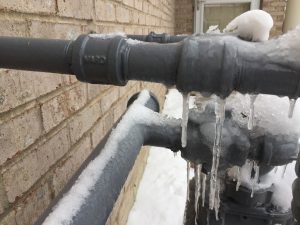Protecting Against Frozen Pipes in Cold Weather: Pro Advice
Protecting Against Frozen Pipes in Cold Weather: Pro Advice
Blog Article
How do you actually feel in regards to How to prepare your home plumbing for winter weather?

Winter can damage your pipes, particularly by freezing pipes. Right here's exactly how to stop it from occurring and what to do if it does.
Intro
As temperatures decline, the risk of icy pipes rises, possibly leading to pricey repair work and water damage. Understanding exactly how to stop frozen pipelines is essential for house owners in cool climates.
Prevention Tips
Insulating susceptible pipelines
Wrap pipelines in insulation sleeves or utilize heat tape to protect them from freezing temperature levels. Focus on pipes in unheated or external areas of the home.
Heating techniques
Maintain interior spaces effectively heated, specifically areas with pipes. Open cabinet doors to enable warm air to flow around pipelines under sinks.
Just how to identify frozen pipelines
Look for reduced water flow from taps, unusual odors or sounds from pipes, and visible frost on subjected pipes.
Long-Term Solutions
Structural adjustments
Think about rerouting pipes far from exterior wall surfaces or unheated locations. Include added insulation to attics, cellars, and crawl spaces.
Upgrading insulation
Buy premium insulation for pipes, attic rooms, and walls. Correct insulation aids maintain constant temperature levels and decreases the danger of frozen pipes.
Securing Exterior Plumbing
Garden hose pipes and outdoor faucets
Detach and drain garden hoses before wintertime. Mount frost-proof faucets or cover outside faucets with protected caps.
Understanding Icy Pipes
What creates pipes to freeze?
Pipelines freeze when exposed to temperatures listed below 32 ° F (0 ° C) for extended durations. As water inside the pipelines ices up, it broadens, taxing the pipeline walls and potentially causing them to rupture.
Dangers and problems
Icy pipes can lead to water system disturbances, residential or commercial property damages, and expensive repair work. Ruptured pipes can flooding homes and trigger extensive structural damage.
Indications of Frozen Piping
Determining frozen pipelines early can avoid them from rupturing.
What to Do If Your Pipes Freeze
Immediate activities to take
If you suspect frozen pipes, maintain faucets available to eliminate pressure as the ice melts. Make use of a hairdryer or towels taken in warm water to thaw pipelines gradually.
Verdict
Stopping frozen pipes calls for positive measures and quick reactions. By comprehending the causes, signs, and preventive measures, home owners can shield their plumbing during cold weather.
5 Ways to Prevent Frozen Pipes
Drain Outdoor Faucets and Disconnect Hoses
First, close the shut-off valve that controls the flow of water in the pipe to your outdoor faucet. Then, head outside to disconnect and drain your hose and open the outdoor faucet to allow the water to completely drain out of the line. Turn off the faucet when done. Finally, head back to the shut-off valve and drain the remaining water inside the pipe into a bucket or container. Additionally, if you have a home irrigation system, you should consider hiring an expert to clear the system of water each year.
Insulate Pipes
One of the best and most cost-effective methods for preventing frozen water pipes is to wrap your pipes with insulation. This is especially important for areas in your home that aren’t exposed to heat, such as an attic. We suggest using foam sleeves, which can typically be found at your local hardware store.
Keep Heat Running at 65
Your pipes are located inside your walls, and the temperature there is much colder than the rest of the house. To prevent your pipes from freezing, The Insurance Information Institute suggests that you keep your home heated to at least 65 degrees, even when traveling. You may want to invest in smart devices that can keep an eye on the temperature in your home while you’re away.
Leave Water Dripping
Moving water — even a small trickle — can prevent ice from forming inside your pipes. When freezing temps are imminent, start a drip of water from all faucets that serve exposed pipes. Leaving a few faucets running will also help relieve pressure inside the pipes and help prevent a rupture if the water inside freezes.
Open Cupboard Doors
Warm your kitchen and bathroom pipes by opening cupboards and vanities. You should also leave your interior doors ajar to help warm air circulate evenly throughout your home.

Hopefully you liked our article on How To Avoid Freezing Pipes. Many thanks for taking the time to browse our posting. Loved our entry? Please share it. Help another person discover it. Many thanks for your time. Come back soon.
Call Today Report this page